
Blister beetles are beetles of the family Meloidae, so called for their defensive secretion of a blistering agent, cantharidin. About 7,500 species are known worldwide. Many are conspicuous and some are aposematically colored, announcing their toxicity to would-be predators.

The family Oedemeridae is a cosmopolitan group of beetles commonly known as false blister beetles, though some recent authors have coined the name pollen-feeding beetles. There are some 100 genera and 1,500 species in the family, mostly associated with rotting wood as larvae, though adults are quite common on flowers. The family was erected by Pierre André Latreille in 1810.
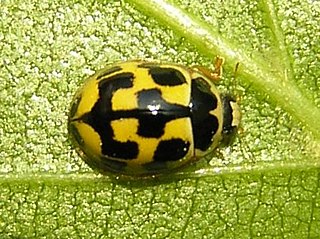
Propylea quatuordecimpunctata is a small lady beetle, belonging to the family Coccinellidae. It is sometimes referred to by the common name 14-spotted ladybird beetle, or simply P-14.

Adalia decempunctata, the ten-spotted ladybird or ten-spotted lady beetle, is a carnivorous beetle of the family Coccinellidae.

Cerocoma is a Palearctic genus of blister beetle, whose biology is poorly known. As in other members of the family, these insects are hypermetamorphic. Larval hosts of few species were described. Imagines show distinct sexual dimorphism in the feeding apparatus and the antennae. All species in this genus have aposematic colouration.
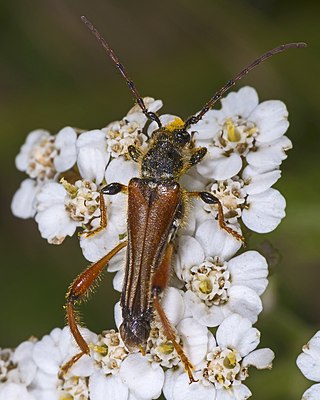
Stenopterus rufus is a beetle species of round-necked longhorns belonging to the family Cerambycidae, subfamily Cerambycinae.
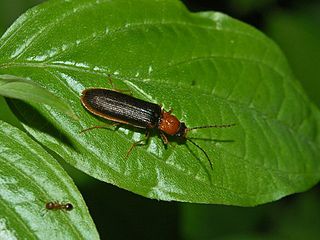
Denticollis linearis is a species of click beetle belonging to the family Elateridae subfamily Dendrometrinae.

Meloe violaceus, the violet oil beetle, is a species of oil beetle belonging to the family Meloidae subfamily Meloinae.

Hycleus polymorphus is a species of Blister Beetles belonging to the family Meloidae subfamily Meloinae.

Oedemera podagrariae, common name false blister beetle, is a quite common species of beetles belonging to the family Oedemeridae subfamily Oedemerinae.
Hycleus phaleratus, is a species of blister beetle found in China, Taiwan, Thailand, Indonesia, Nepal, India, Sri Lanka, and Pakistan. It is sometimes considered a problem in agricultural cultivation but has been used in traditional Chinese medicine. The species was formerly placed in the genus Mylabris.
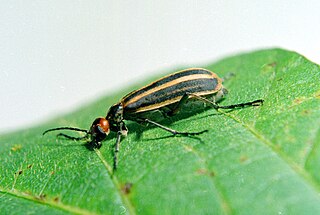
Epicauta vittata is a species of beetle in the family Meloidae, the blister beetles. It is native to eastern North America, including eastern Canada and the eastern United States. It is known commonly as the striped blister beetle and the old-fashioned potato beetle. It is known as an agricultural pest.

Aphidecta obliterata is a species of Coccinellidae, a flying beetle.

Ceroctis capensis, or spotted blister beetle, is diurnal and endemic to Southern Africa occurring in diverse habitats, and belonging to the Meloidae or Blister beetle family. It secretes a toxic liquid from its leg joints when roughly handled, blistering human skin. This species somewhat resembles Mylabris oculata, a member of the same family.
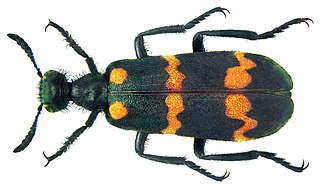
Hycleus pustulatus is a species of blister beetle found in India, Sri Lanka, China and Java.

Oberea pupillata is a species of beetle in the family Cerambycidae. It was described by Leonard Gyllenhaal in 1817, originally under the genus Saperda.
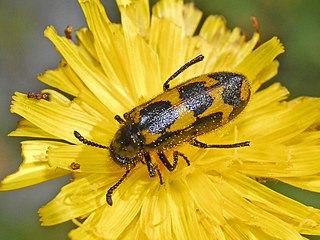
Mylabris flexuosa is a species of blister beetle, belonging to the Meloidae family.
Mylabris thunbergi is a species of blister beetle found in India, and Sri Lanka.
Mylabris orientalis, is a species of blister beetle found in India and Sri Lanka.
Hycleus rouxi, is a species of blister beetle found in India, and Sri Lanka.

















